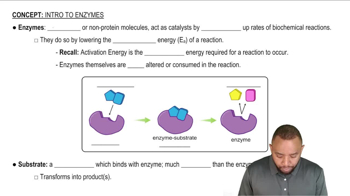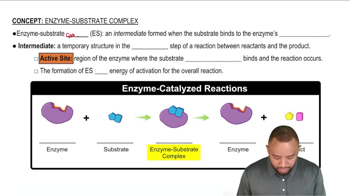Match the terms (1) active site, (2) lock-and-key model, and (3) induced-fit model with each of the following:
a. the portion of an enzyme where catalytic activity occurs
 Verified step by step guidance
Verified step by step guidance Verified video answer for a similar problem:
Verified video answer for a similar problem:



 2:39m
2:39mMaster Models of Enzyme Action Concept 1 with a bite sized video explanation from Jules
Start learning